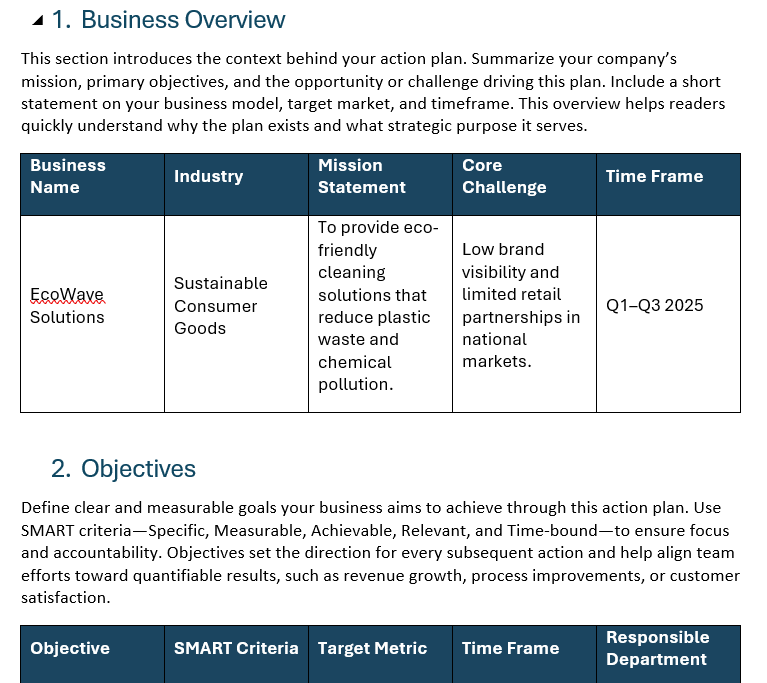A business action plan template helps organizations turn strategies into tangible results. It outlines goals, assigns responsibilities and sets deadlines to ensure progress is measurable and achievable. By using a template, teams stay organized and aligned on priorities. Whether launching a new product or optimizing internal operations, this structured approach ensures every task contributes directly to business objectives and long-term growth. Download our free template to start planning smarter and executing more efficiently.
Using project management software takes the business action plan from a static document to a dynamic, real-time system. It allows users to track deadlines, monitor dependencies and adjust priorities as the business evolves. Teams can collaborate on shared plans, update task statuses instantly and keep leadership informed with automated progress reports and visual dashboards.
ProjectManager is ideal for executing your business action plan template. It combines powerful planning tools with live tracking features that help you oversee progress in real time. Its Gantt charts link dependencies to avoid cost overruns, it filters for the critical path to identify tasks with zero slack and sets a baseline to track progress in real time. Workload management tools and dashboards help every task be completed on schedule and within budget. With AI-informed reports, timesheets and integrated collaboration tools, our software turns plans into measurable, successful projects. Get started with ProjectManager today for free.

Why You Need a Business Action Plan Template
A business action plan template provides clarity, accountability and focus across teams. It defines specific actions, assigns ownership and establishes deadlines so that no task falls through the cracks. This structure turns ideas into actionable steps that keep teams on track and aligned with company goals. It’s an essential tool for ensuring consistent progress toward measurable outcomes.

When to Use a Business Action Plan Template
Use a business action plan template whenever your organization needs to translate strategy into execution. It’s particularly useful when starting a new initiative, responding to a performance gap or launching a business transformation effort. The template helps structure workflows, prioritize actions and ensure that every step aligns with broader business goals. It can also guide teams during quarterly planning cycles, process improvements or cross-functional projects that demand clear accountability.
Who Should Use This Business Action Plan Template?
This business action plan template is designed for executives, managers and team leads who need to coordinate complex initiatives. It’s ideal for departments such as operations, marketing, finance and human resources, as well as startups looking to formalize growth strategies. The template ensures everyone understands their role in achieving strategic objectives. Small businesses benefit by improving focus and alignment, while large organizations can streamline interdepartmental coordination. Anyone seeking structured accountability can use this template to accelerate execution.
How to Use ProjectManager’s Business Action Plan Template
Start by downloading the business action plan template and entering your objectives, milestones and key deliverables. Assign tasks to team members directly in ProjectManager and set clear deadlines. Use the software’s Gantt chart to visualize dependencies and progress, while dashboards and reports give instant insights into performance. By integrating planning with execution, ProjectManager ensures your business action plan stays organized, up to date and achievable from start to finish.
1. Business Overview
This section introduces the context behind your action plan. Summarize your company’s mission, primary objectives and the opportunity or challenge driving this plan. Include a short statement on your business model, target market and timeframe. This overview helps readers quickly understand why the plan exists and what strategic purpose it serves.
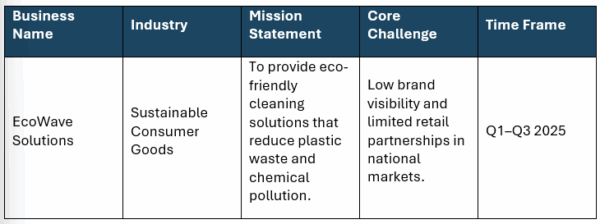
2. Objectives
Define clear and measurable goals your business aims to achieve through this action plan. Use SMART criteria—Specific, Measurable, Achievable, Relevant and Time-bound—to ensure focus and accountability. Objectives set the direction for every subsequent action and help align team efforts toward quantifiable results, such as revenue growth, process improvements or customer satisfaction.
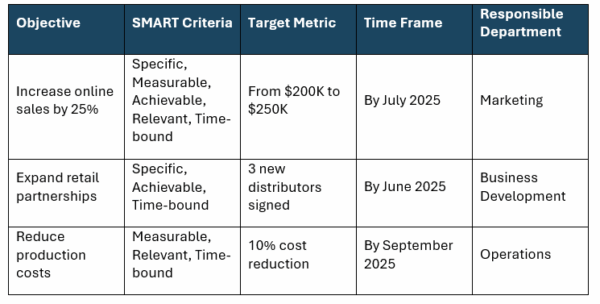
3. Strategies
List the key methods and approaches that will help achieve each objective. Strategies should translate your vision into broad initiatives—marketing efforts, operational improvements, financial tactics or customer engagement methods. This section connects your goals to practical execution paths and ensures the plan stays consistent with your organization’s overall strategic priorities.

4. Action Steps
Detail the specific tasks or initiatives that must be completed to implement your strategies. Assign clear responsibilities, deadlines, required resources and current progress status. This section transforms abstract goals into actionable work. When structured in a table, it provides visibility into who is doing what, by when and with which resources.
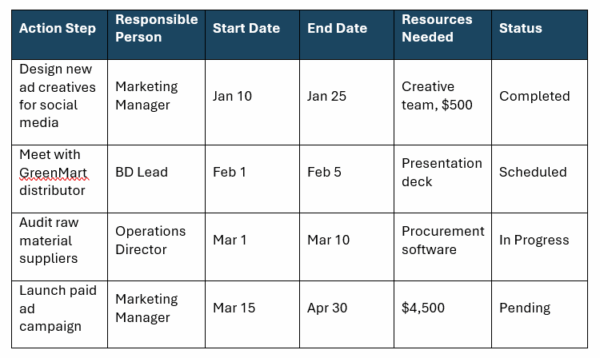
5. Resources & Budget
Identify the human, financial and material resources required to complete each task. Include estimated costs, departmental allocations and any external services or tools. By outlining resources and budgets, you create transparency and accountability. This section helps prevent overspending, supports funding requests and ensures your team can execute the plan effectively.
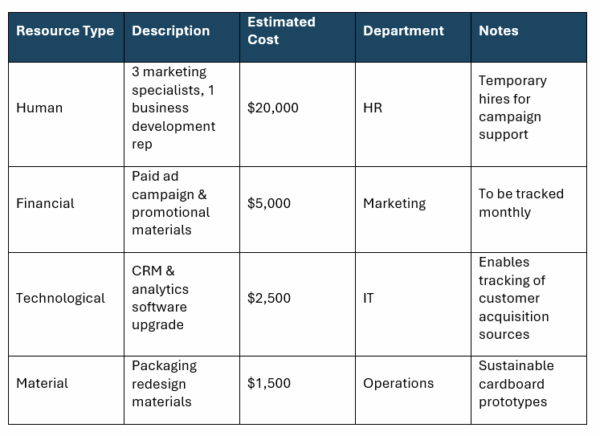
6. Timeline & Milestones
Outline the key phases of your plan and when specific deliverables are expected. Use a table or Gantt-style chart to show start and end dates for each activity. This section helps track progress, visualize dependencies and ensure timely completion. Milestones mark critical checkpoints for performance reviews and decision-making during implementation.
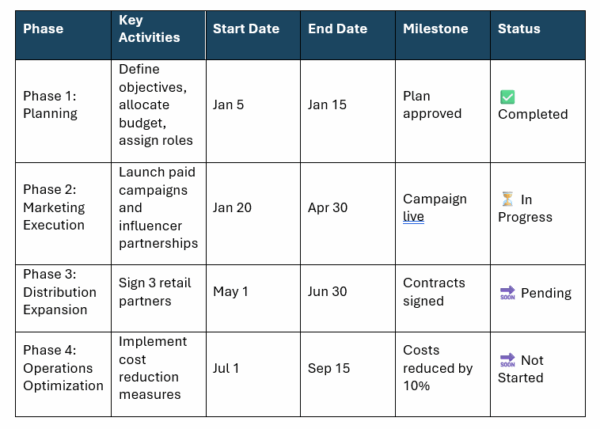
7. KPIS & Success Metrics
Define the performance indicators used to evaluate success. KPIs translate goals into measurable results such as sales growth, conversion rate, market share or cost reduction. Include baseline values, targets and measurement frequency. This section ensures you can monitor progress objectively and adjust strategies early if results deviate from expectations.
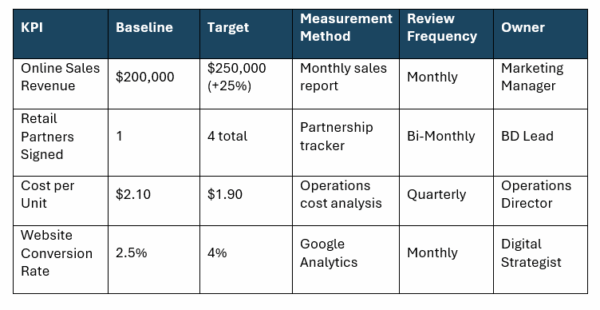
8. Accountability & Review
Describe how performance will be monitored, who’s responsible for reporting and how often progress reviews occur. Assign ownership for each objective and define reporting tools or formats. Regular check-ins maintain focus, promote transparency and help identify issues before they escalate. This section keeps your plan active and continuously improving.
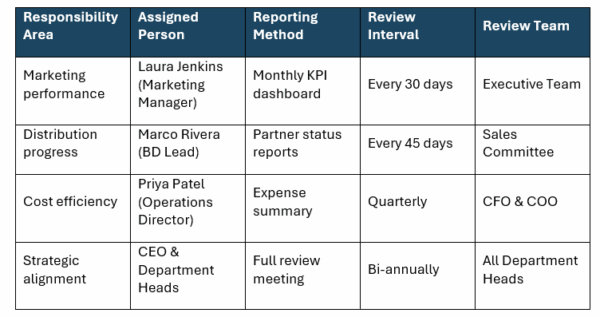
9. Risks & Contingency Plan
Identify potential obstacles that could affect execution and outline preventive measures or backup strategies. Include a brief assessment of each risk’s likelihood and impact. Preparing mitigation steps in advance reduces uncertainty and strengthens team confidence. This section ensures business continuity even if projects face delays, budget overruns or external disruptions.

10. Approval & Sign-Off
Record formal authorization for the plan before implementation. Include names, titles and signatures of responsible parties such as team leaders, department heads or executives. This section confirms alignment among stakeholders and reinforces accountability. A signed action plan demonstrates commitment to execution and ensures that all participants support the defined objectives and strategies.

Free Related Templates
In addition to the business action plan template, these free templates help businesses organize, plan and execute their strategies effectively. Each tool supports a different stage of the business process, from tracking tasks to writing plans that secure funding or guide long-term growth. Together, they give teams the structure and visibility they need to achieve measurable success.
Action Log Template
Download this free action log template to help track ongoing tasks, deadlines and responsible parties in one place. It’s ideal for monitoring progress and ensuring follow-through on every decision made during meetings or planning sessions. With this template, teams can easily identify what’s been completed, what’s pending and who’s accountable for each next step.
Business Plan Template
Use this free business plan template to provide a clear framework for defining company goals, market strategies and financial projections. It helps entrepreneurs and managers present their vision to investors and stakeholders. By outlining objectives and success metrics, the template ensures that strategic direction stays aligned with both short-term priorities and long-term growth.
Business Proposal Template
The free business proposal template simplifies the process of pitching ideas or services to potential clients or partners. It includes sections for project scope, pricing and deliverables, allowing teams to create professional proposals quickly. This structured approach saves time, increases clarity and improves the likelihood of winning new business opportunities.
Create a Business Action Plan With ProjectManager
With ProjectManager, you can turn your business action plan template into a live, collaborative project. The platform lets you manage every step of execution—from outlining tasks to tracking deliverables—in a single, centralized workspace. Multiple project views, such as Gantt charts, kanban boards and task lists, make it easy to visualize timelines, assign responsibilities and keep teams aligned on goals across departments or initiatives.
Allocate and Manage Resources Efficiently
ProjectManager’s robust resource management tools ensure that every task in your business action plan is properly supported. The team page lets managers see each team member’s tasks and their progress in real time and those tasks can be updated without leaving the page. Workload charts offer a clear view of resource distribution so you can reallocate people or assets quickly when priorities shift, balancing workload and avoiding burnout. These features streamline coordination and reduce bottlenecks that slow down progress.
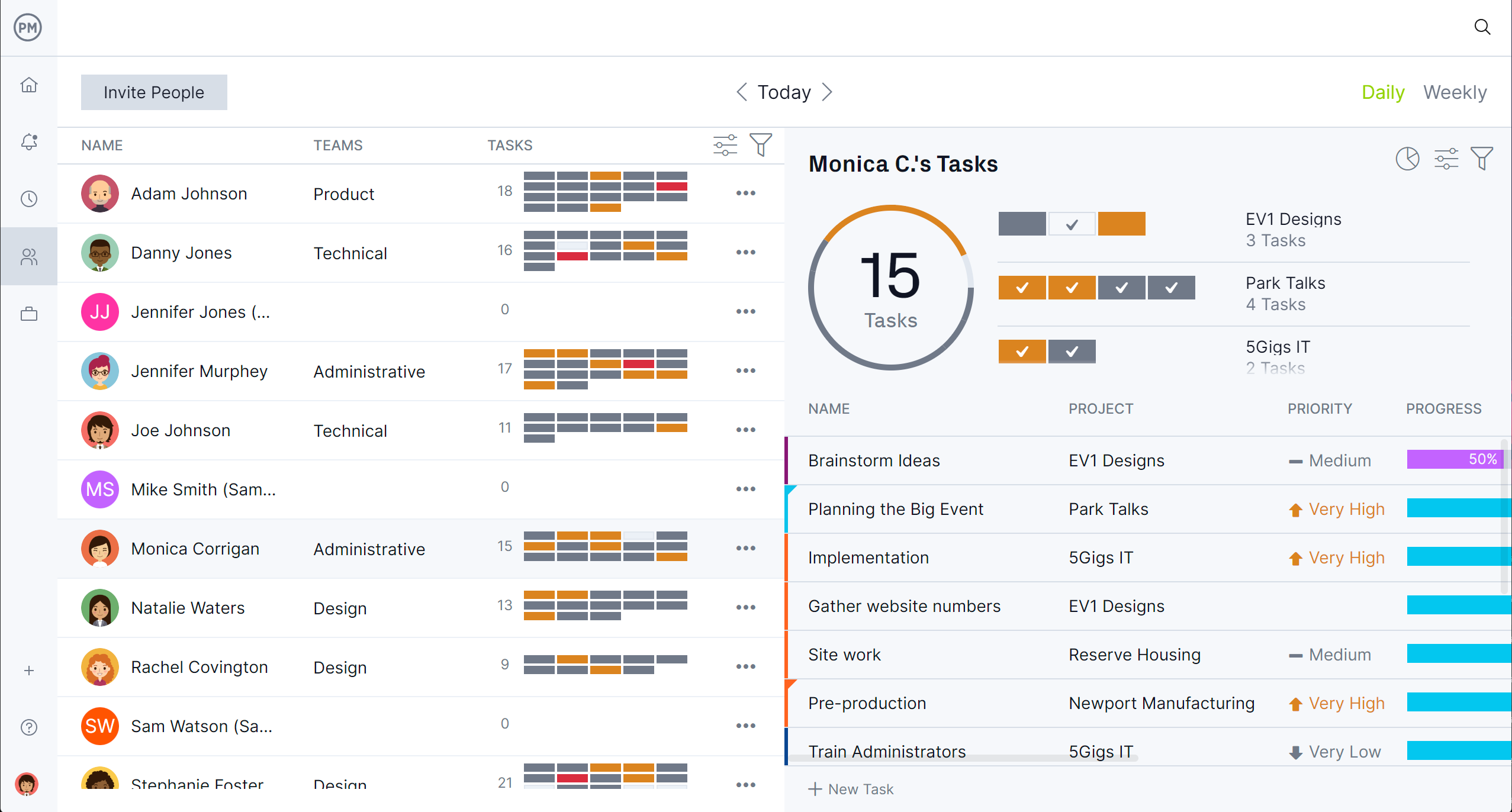
Track Performance With Real-Time Dashboards and Reports
Once your business action plan template is in ProjectManager, our tracking features deliver instant visibility into progress and performance. Real-time dashboards monitor key metrics such as costs, task completion rates and deadlines. Reports generate automatic insights that highlight risks and opportunities, while customizable timesheets track labor costs accurately.
AI Project Insights offers instant summaries and suggestions to deliver projects successfully. Together, these tools turn static plans into actionable data-driven strategies that keep your business moving forward.

Watch a Business Strategy Video
Watch Jennifer Bridges, PMP, in this tutorial video on why project managers must align their projects with the business strategy of their organization. She highlights key benefits such as improved communication, the ability to support strategic goals and increased organizational agility.
Related Business Content
A business action plan template is only part of the larger process of running a successful business. For readers who would like to go further, check out the links below. There are articles on business process improvement, how to write a business plan and much more.
- Business Process Improvement: Steps & Methodologies
- Business Project Management Basics
- How to Write a Business Plan
- Aligning Your Project to Business Strategy
- 5 Must-Have Business Report Templates
- What Is a Business Budget? Business Budgeting Basics
ProjectManager is online project and portfolio management software that connects teams, whether they’re in the office or out in the field. They can share files, comment at the task level and stay updated with email and in-app notifications. Get started with ProjectManager today for free.
